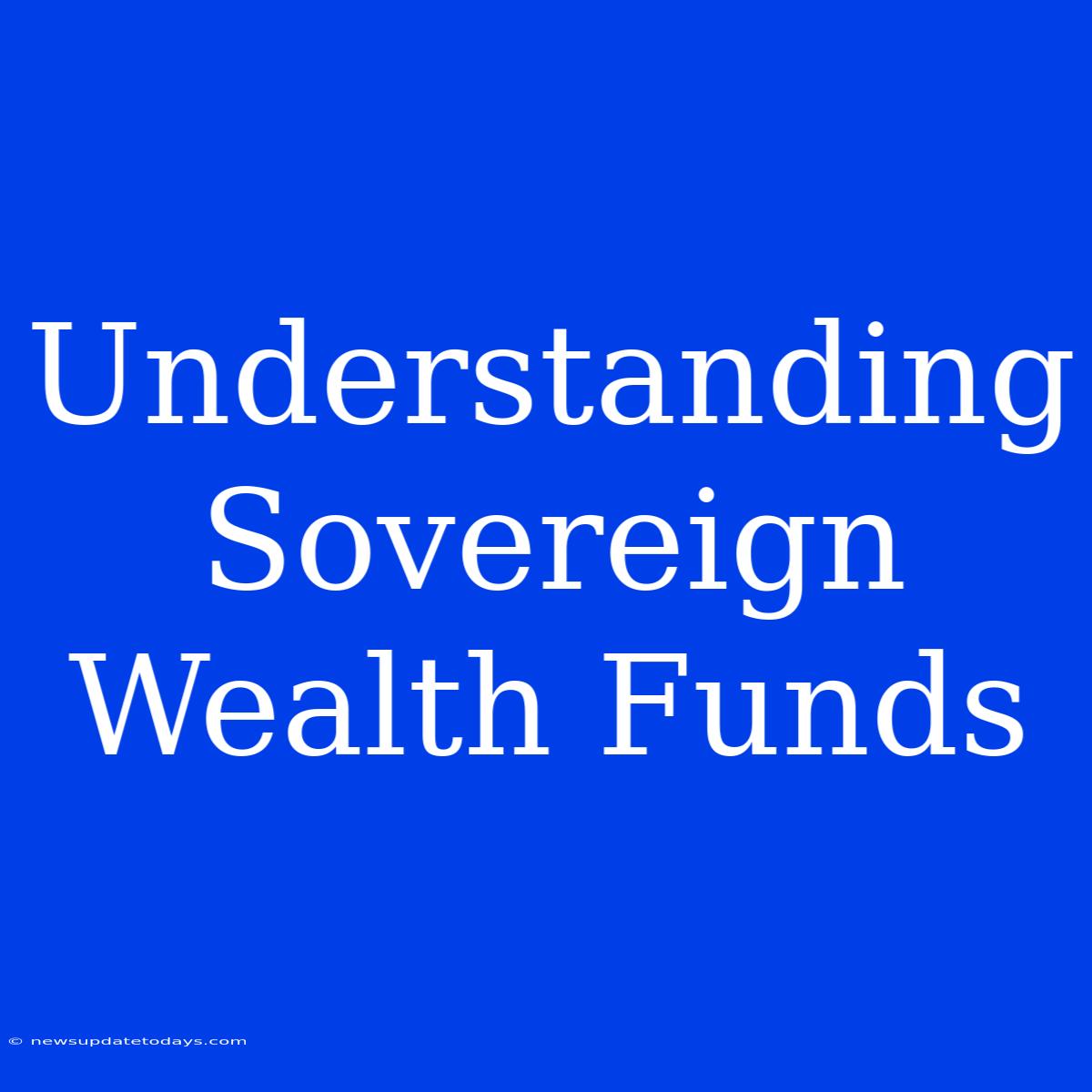Understanding Sovereign Wealth Funds: A Deep Dive into Global Investment Powerhouses
Sovereign Wealth Funds (SWFs) are investment vehicles controlled by government entities, accumulating wealth from various sources like natural resource revenues (oil, gas, minerals), foreign exchange reserves, and budget surpluses. They represent a significant force in global finance, wielding considerable influence in international markets and shaping economic landscapes. Understanding their function, investment strategies, and impact is crucial for navigating the complexities of the modern financial world.
What are Sovereign Wealth Funds?
At their core, SWFs are state-owned investment funds designed to manage and invest a nation's wealth for long-term economic stability and prosperity. Unlike traditional pension funds, which serve specific populations, SWFs represent the broader national interest. Their assets are typically diversified across a range of asset classes, including stocks, bonds, real estate, and private equity, aiming to generate returns to support future generations.
Types of Sovereign Wealth Funds:
SWFs are broadly categorized based on their mandate and funding sources:
-
Stabilization Funds: These funds primarily aim to manage macroeconomic volatility and smooth out fluctuations in government revenue, often from commodity exports. They act as buffers against economic shocks.
-
Reserve Funds: Designed to manage a nation's foreign exchange reserves, these funds prioritize liquidity and safety, often investing in low-risk assets.
-
Development Funds: These funds actively promote economic diversification and development within the originating country, investing in infrastructure projects, strategic industries, and other initiatives aligned with national development goals.
-
Future Generations Funds: Focused on long-term sustainability and the welfare of future generations, these funds prioritize long-term growth and intergenerational equity.
Investment Strategies and Objectives:
The investment strategies employed by SWFs are diverse, reflecting their varied mandates and risk tolerances. However, common objectives include:
-
Maximizing long-term returns: While risk appetites differ, SWFs generally seek to generate consistent returns over the long term to sustain their wealth.
-
Diversification: To mitigate risk, SWFs typically invest across various asset classes and geographies, ensuring their portfolio isn't overly reliant on any single investment.
-
Transparency and Governance: Increasingly, there’s a push for greater transparency and adherence to best practices in governance. International organizations like the Santiago Principles provide guidelines for responsible SWF management.
The Impact of Sovereign Wealth Funds:
SWFs play a significant role in the global economy, influencing markets and driving investment flows. Their impact includes:
-
Increased Capital Flows: Their substantial investments contribute to global liquidity and capital markets, providing crucial funding for businesses and infrastructure projects worldwide.
-
Market Influence: Their significant capital allocations can impact stock prices and influence investment trends across various sectors.
-
Geopolitical Implications: SWF investments can carry geopolitical implications, shaping diplomatic relationships and influencing the strategic allocation of capital across nations.
Challenges and Criticisms:
Despite their significant contributions, SWFs face several challenges and criticisms:
-
Transparency and Accountability: Concerns remain about the lack of transparency in some SWF operations, raising questions regarding governance and accountability.
-
Political Influence: Their substantial investments can raise concerns about potential political influence and interference in the countries where they invest.
-
Competition and Market Distortion: The massive capital controlled by some SWFs can create competitive imbalances and distort markets.
Conclusion:
Sovereign Wealth Funds represent a powerful force in global finance, shaping investment landscapes and influencing economic development worldwide. Understanding their diverse mandates, investment strategies, and potential impact is crucial for anyone involved in global finance, policymaking, or economic analysis. As these funds continue to grow in influence, the need for transparent and responsible governance remains paramount.

